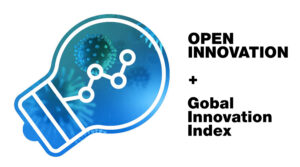
The Global Innovation Index (GII) 2024, published by the World Intellectual Property Organization (WIPO), evaluates the innovation performance of 133 economies using 78 indicators across various domains, including institutions, human capital, infrastructure, market sophistication, and business sophistication . While the GII encompasses a broad spectrum of innovation metrics, the explicit inclusion of open innovation practices is not directly evident in the current framework.
Understanding Open Innovation
Open innovation refers to an innovation model where organizations utilize both internal and external ideas, as well as internal and external paths to market, to advance their technology. This approach emphasizes collaboration with external partners, including academia, industry, and the public, to co-create and disseminate knowledge and technologies.
Current GII Indicators Related to Open Innovation
While the GII does not have a dedicated indicator labeled “open innovation”, several existing indicators indirectly capture aspects of open innovation:
- 7.1.3 Global Brand Value, Top 5,000, % GDP: This indicator assesses the brand value of the top 5,000 global brands as a percentage of GDP, reflecting the commercialization aspect of innovation.
- 7.1.4 Industrial Designs by Origin/bn PPP$ GDP: This measures the number of industrial design applications filed by residents, indicating design innovation activities.
These indicators, while not exclusively focused on open innovation, provide insights into collaborative and design-driven innovation activities within economies.
Proposed Inclusion of Open Innovation in the GII
To more comprehensively assess open innovation practices, the GII could consider incorporating new indicators or modifying existing ones to capture the following aspects:
Collaborative Research and Development (R&D): Metrics on joint R&D projects between public institutions and private enterprises can reflect the extent of collaborative innovation efforts.
Knowledge Transfer Mechanisms: Indicators measuring the effectiveness of knowledge transfer from academia to industry, such as licensing agreements and spin-offs, can provide insights into open innovation dynamics.
Open Source Contributions: Tracking contributions to open-source projects can highlight the engagement of economies in collaborative innovation platforms.
Innovation Networks and Clusters: Assessing the presence and performance of innovation clusters and networks can shed light on the collaborative environment conductive to open innovation.
Incorporating open innovation metrics into the GII would provide a more nuanced understanding of how economies leverage collaborative approaches to drive innovation. By expanding the indicator set to include measures of collaborative R&D, knowledge transfer, open-source participation, and innovation networks, the GII can offer a more comprehensive assessment of innovation ecosystems worldwide
